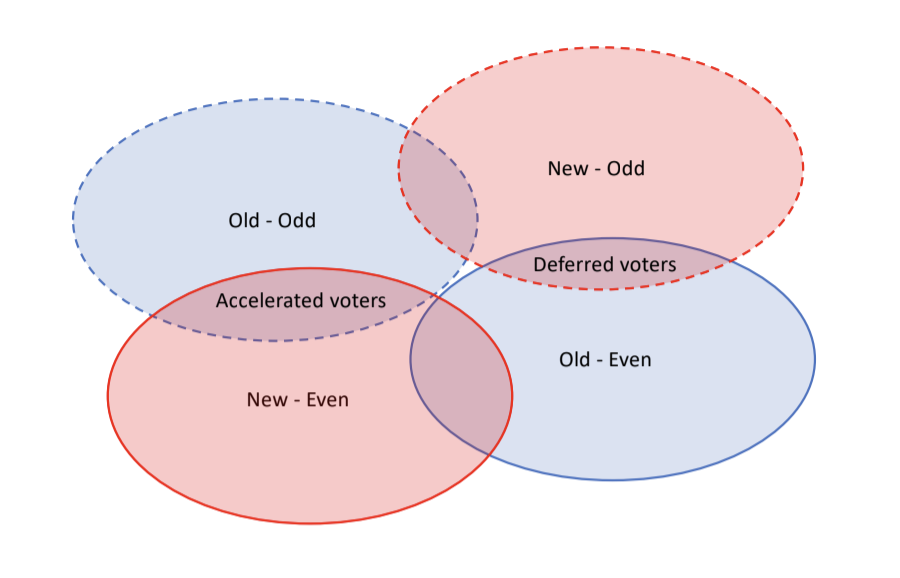LWVSD and LWVNCSD are partnering with several organizations, led by Partnership for the Advancement of New Americans (PANA), to educate voters and help implement the transition to vote centers by the San Diego County Registrar of Voters. You also have an opportunity to be part of this important process.
The current draft of theElection Administration Plan(EAP) is posted for public comment and will be available until it is finalized on March 8. Some of the most important features include:
-
The Registrar’s office plans to provide more vote centers than the required minimum.
-
There will be 195 vote centers that will be open for four days, including Election Day, in San Diego County.
-
San Diego County will operate approximately 39 vote centers open for 11 days, including Election Day.
-
The county plans to provide approximately 130 ballot drop box locations throughout San Diego County.
-
Tentative locations for the vote centers can be found on page 10 of the EAP.
You can make your voice heard by suggesting where vote centers and drop off boxes will be located in your community by usingthis siting tool. You can also find more information about the transition process at theVoters Choice Actpage of the ROV’s website.
Important dates:
-
Feb. 3: Public Hearing at 5:30pm.
-
Feb. 4: Last day to provide comments of draft EAP (5pm deadline).
-
Feb. 21: Amended EAP will be posted on ROV website.
-
March 6: Last day to provide comments to EAP (5pm deadline).
-
March 8: The registrar is scheduled to send the final adoption plan to the California Secretary of State for approval.
Thanks for taking the time to be an informed citizen in this important election change for our county.

Deferred and Accelerated Voters
California state Senators are elected every four years. The terms are staggered; those from even-numbered districts elected in one statewide General Election, and those from odd-numbered districts two years later. This creates a problem when district lines are redrawn every ten years. All of the new district lines for the state Assembly and US Congress take effect at the next election – but for the state Senate, the process is staggered, with new district lines taking effect for only half of the districts immediately after redistricting, and the other lines taking effect two years later.
Deferred Voters
In 2022 voters will elect new state senators in even-numbered districts for new four-year terms. State Senators in odd-numbered districts were elected in 2020. Some voters may find themselves moved from an even-numbered district to an odd-numbered one. For these individuals, voting in a state Senate race will be deferred until 2024. The Citizens Redistricting Commission did attempt to create and number districts that cause as few voters as possible to defer voting for another two years.
Accelerated Voters
Accelerated voters are the opposite of deferred voters. These are voters who voted in odd numbered state Senate districts in 2020, and now, in 2022, are in even-numbered districts. They will vote for state Senator in both 2020 and 2022.
What happens to voters in deferred areas? Who do they contact as “their” state Senator?In 2013, the state Senate set the following rules:
Due to redistricting, Senate districts have a unique issue that Assembly and Congressional districts do not have. Of the Senate districts established by the Citizens Redistricting Commission in 2011, only the odd-numbered districts went into effect for the 2012 election cycle. The new even-numbered districts will go into effect for the 2014 election cycle, and the even-numbered districts previously established by the 2001 redistricting will continue to exist until 2014. These unique circumstances create some areas of overlap between the old and new districts (“accelerated areas”) and some areas without coverage (“deferred areas”). For the 2013-14 Regular Session of the Legislature, each accelerated area essentially has two Senators representing the area and each deferred area has none. The Senate Committee on Rules will assign a Senator to provide appropriate constituent services to each deferred area. This is a normal consequence of the redistricting process.
Assuming that the Senate applies the same practice in 2023, Senators in even-numbered districts will be elected in 2022, and the Senate Committee on Rules will assign a Senator to each deferred area.
You can find your state representatives at this website.